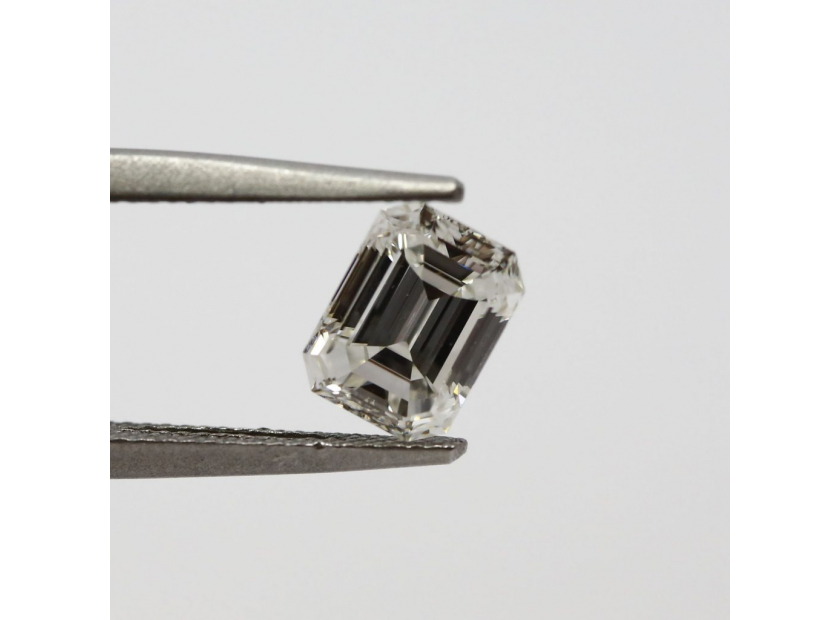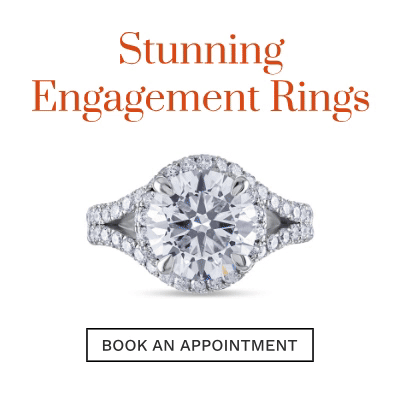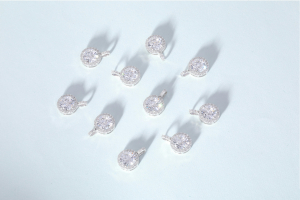USD
/
USD
/
Shipping to:
Currency:
An eye-clean diamond is one that appears flawless to the naked eye, meaning it does not show any inclusions or blemishes when viewed without magnification. This term is especially important for those looking to purchase a diamond that offers exceptional beauty without the premium cost of higher-clarity grades. Eye-clean diamonds are often found in clarity grades such as VS1, VS2, and sometimes SI1, where inclusions are present but typically not visible to the unaided eye.
Why Eye-Clean Matters
The concept of an eye-clean diamond is crucial because it balances beauty and budget. While inclusions and blemishes affect a diamond's clarity grade, not all of them are visible without a jeweler’s loupe or microscope. By selecting an eye-clean diamond, buyers can enjoy a visually stunning gemstone without paying the higher prices associated with flawless or internally flawless grades.
Determining Eye-Clean Diamonds
Determining whether a diamond is eye-clean involves a few steps. First, it is essential to view the diamond in person, under different lighting conditions, to ensure no visible inclusions. Online shoppers should rely on high-quality images and videos, and consult with experts who can confirm the diamond's eye-clean status. It's also helpful to understand that the location, size, and type of inclusion play significant roles in whether a diamond appears eye-clean.
The Impact of Diamond Shape on Eye-Cleanliness
The shape of a diamond can influence its eye-cleanliness. For instance, brilliant cuts like round or princess diamonds often hide inclusions better due to their faceting patterns. On the other hand, step cuts like emerald or Asscher diamonds have larger, open facets that make inclusions more noticeable. When selecting a diamond, it's essential to consider the shape along with the clarity grade to ensure the diamond will be eye-clean.
Comparing Eye-Clean Diamonds to Higher Clarity Grades
While eye-clean diamonds are a popular choice for many buyers, some may still prefer the peace of mind that comes with higher clarity grades. Flawless and internally flawless diamonds offer perfection under 10x magnification, but at a significant price premium. An eye-clean diamond, by contrast, provides an excellent balance of appearance and value, allowing you to allocate more of your budget towards size, cut quality, or other desirable attributes.
Expert Tips for Buying Eye-Clean Diamonds
When purchasing an eye-clean diamond, it’s advisable to prioritize other quality factors such as cut, color, and carat weight. A well-cut diamond with excellent symmetry and polish will maximize light performance, making any minor inclusions less noticeable. Additionally, buyers should consider their personal tolerance for inclusions and how the diamond will be set, as certain settings can also help mask imperfections.
FAQ
What clarity grades are most likely to be eye-clean?
Eye-clean diamonds are commonly found in the VS1, VS2, and sometimes SI1 clarity grades. These diamonds may have inclusions, but they are typically not visible to the naked eye.
Can all diamond shapes be eye-clean?
While most diamond shapes can be eye-clean, brilliant cuts like round and princess shapes tend to hide inclusions better. Step cuts like emerald and Asscher shapes may require a higher clarity grade to be eye-clean due to their open facets.
Is it possible to determine if a diamond is eye-clean when shopping online?
Yes, it’s possible. Look for high-resolution images and videos, and consider seeking confirmation from a diamond expert who can evaluate the stone's eye-clean status.
Are eye-clean diamonds more affordable than higher clarity grades?
Yes, eye-clean diamonds are generally more affordable than higher clarity grades like IF or FL, making them an excellent option for those who want a visually clean diamond without paying a premium.
Do inclusions in eye-clean diamonds affect their durability?
Inclusions in eye-clean diamonds typically do not affect their durability. These diamonds are carefully evaluated to ensure that any inclusions do not compromise the stone’s structural integrity.








